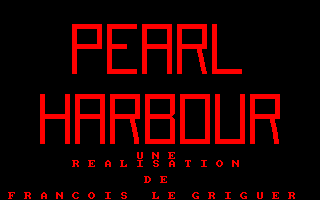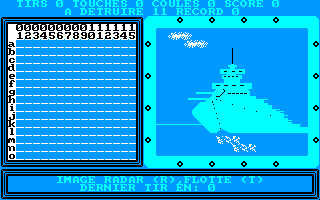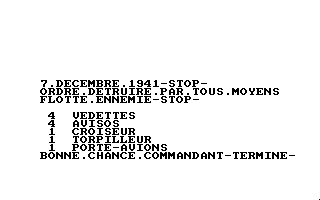Retro Replay Review
Gameplay
Pearl Harbour transforms the classic Battleship board game into a deep, turn-based digital experience on a sprawling 15×15 grid. You issue coordinates such as “a01” for the top-left and “o15” for the bottom-right to target enemy vessels, then await feedback on hits or misses. With five types of ships—ranging from lone patrol boats to five-cell battleships—the core loop remains intuitive but gains complexity from grid size and variable ship placement.
(HEY YOU!! We hope you enjoy! We try not to run ads. So basically, this is a very expensive hobby running this site. Please consider joining us for updates, forums, and more. Network w/ us to make some cash or friends while retro gaming, and you can win some free retro games for posting. Okay, carry on 👍)
One of the standout mechanics is the in-game radar system. Strategic use of limited radar sweeps reveals potential ship clusters, forcing you to weigh the benefits of a broad scan against saving charges for critical late-game decisions. Precise targeting not only sinks enemy ships but also racks up bonus points, rewarding players who spot patterns and anticipate adversary moves.
Beyond the standard skirmish mode, Pearl Harbour offers a series of historically themed engagements that echo the December 7, 1941 attacks. Each scenario adjusts ship layouts and starting radar supplies, simulating the ebb and flow of battle readiness. Whether you’re facing an AI adversary or testing your skills in custom scenarios, the game’s pacing and strategic depth will keep you plotting your next salvo.
Graphics
Visually, Pearl Harbour opts for a clean, functional interface that still evokes the tension of naval warfare. The ocean grid features subtle wave animations and shifting light patterns, while hit markers explode in pixelated water bursts. The UI uses a muted palette of navy blues and grays accented by vintage map overlays, reinforcing the WWII setting without overwhelming the core tactical display.
Ship silhouettes and icons draw inspiration from period diagrams and archival blueprints, lending authenticity to each vessel you hunt or protect. Background artwork—smoky skies, distant aircraft silhouettes, and decaying dockside imagery—appears behind menus and loading screens, immersing you in the era without distracting from the grid itself.
Feedback animations are crisp and responsive: a direct hit shatters ship outlines with a flash of orange, while a miss ripples across the surface in concentric waves. Even the radar sweep effect is polished, with scanning lines that pulse in real time to reveal clusters of potential targets. Performance remains smooth across a wide range of hardware, ensuring that the focus stays firmly on strategic decisions rather than loading delays.
Story
Pearl Harbour’s narrative framework is built around the fateful morning of December 7, 1941, when Japanese forces launched a surprise assault on the U.S. Pacific Fleet. Between battles, you receive concise historical briefings that outline the stakes of each mission, from protecting capital ships in Battleship Row to counter-scouting enemy destroyers approaching the harbor entrance.
Although the game doesn’t feature sprawling cutscenes or branching dialogue trees, it weaves authentic radio chatter, period music, and archival photographs into mission preambles and debriefings. This approach keeps the focus on strategic gameplay while offering enough context to remind you of the real-world significance behind each grid encounter.
Short text vignettes and voice-over snippets spotlight both Allied and Japanese perspectives, highlighting key moments of bravery and miscalculation. These narrative flourishes never overstay their welcome, instead enriching the core Battleship mechanic with a sense of purpose and weight that extends beyond mere point-scoring.
Overall Experience
Pearl Harbour strikes a rare balance between a familiar board-game formula and a historically grounded naval campaign. Newcomers can jump straight into skirmishes to learn grid mechanics and radar tactics, while history enthusiasts will appreciate the period accuracy and contextual storytelling threaded through every battle.
The game’s replayability is bolstered by randomized ship placement, variable radar allocations, and a spectrum of difficulty settings. Each session feels fresh—no two enemy formations are the same, and mastering the art of deduction remains as rewarding on your fifteenth playthrough as it was on your first.
Overall, Pearl Harbour offers both an engaging strategic challenge and an accessible entry point into WWII naval history. Whether you’re hunting for a digital adaptation of Battleship or seeking a lightweight yet meaningful historical simulation, this title delivers satisfying depth, polished presentation, and a respectful nod to one of history’s most pivotal moments.
 Retro Replay Retro Replay gaming reviews, news, emulation, geek stuff and more!
Retro Replay Retro Replay gaming reviews, news, emulation, geek stuff and more!








Reviews
There are no reviews yet.